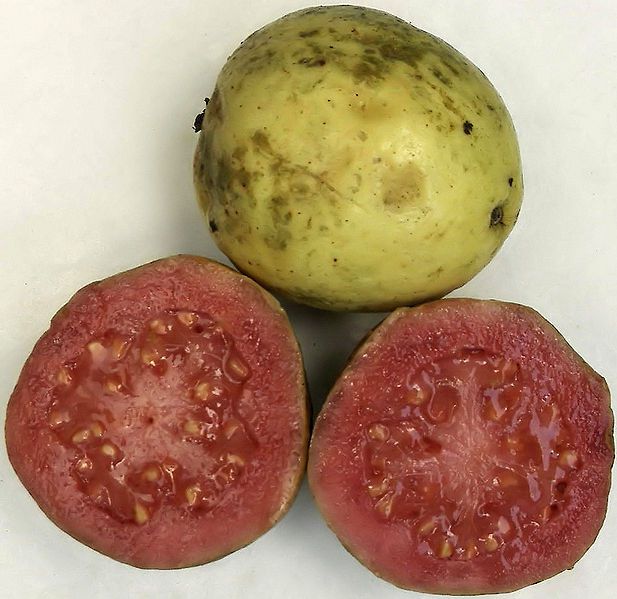-
 Sensitive Natural Space
Sensitive Natural Space
-
 Class II antiarrhythmics
Class II antiarrhythmics
-
 Alter Eco
Alter Eco
-
 Anti-HER
Anti-HER
-
 ECS
ECS
-
 Serpentine
Serpentine
-
 Plutonium
Plutonium
-
 Viscoplasticity
Viscoplasticity
-
 Rigor mortis
Rigor mortis
-
 Smoketree
Smoketree
-
 Exocytosis
Exocytosis
-
 Seyfert galaxy
Seyfert galaxy
-
 Metre
Metre
-
 Datamining
Datamining
-
 Barchan
Barchan
-
 Gastritis
Gastritis
-
 Filtrate
Filtrate
-
 XMP
XMP
-
 Syngas
Syngas
-
 Bolometer
Bolometer
-
 Giant panda
Giant panda
-
 Americium
Americium
-
 Transmission line
Transmission line
-
 Ring Nebula
Ring Nebula
-
 Ocytocin
Ocytocin
-
 Phase diagram
Phase diagram
-
 Basic rock
Basic rock
-
 Remission
Remission
-
 Gravitational assist
Gravitational assist
-
 Pont Farin
Pont Farin
Guava
Guava season
Grown in South America, Africa and Asia, the guava is often found on European markets in winter. It can, however, be found all year round.
Nutritional value of guava
An exceptional source of vitamin C (more than oranges and kiwis), this fruit is an excellent intestinal stimulant (people who have sensitive intestines should avoid this fruit). It also contains vitamins A and B. In addition to being light (only 33 kilocalories per 100 grammes), guava is rich in calcium, magnesium, iron and especially potassium.
Guava varieties
There are about a hundred species, but only two varieties are found in France:
- the pirifera guava, which is pear shaped with pinkish, yellow or white flesh;
- the pomifera guava, which is apple shaped wiith salmon pink flesh.
Guava facts
Store guava at room temperature if it is not yet ripe. It is very fragile and must never spend more than two days in the vegetable crisper of the refrigerator, or its flesh will become hard and tough.
It can be eaten raw, cooked, sweetened or served as an accompaniment for savoury dishes.
 The guava is a fruit that stimulates intestinal transit. © Fibonacci/Licence Creative Commons
The guava is a fruit that stimulates intestinal transit. © Fibonacci/Licence Creative Commons
Latest
Fill out my online form.



